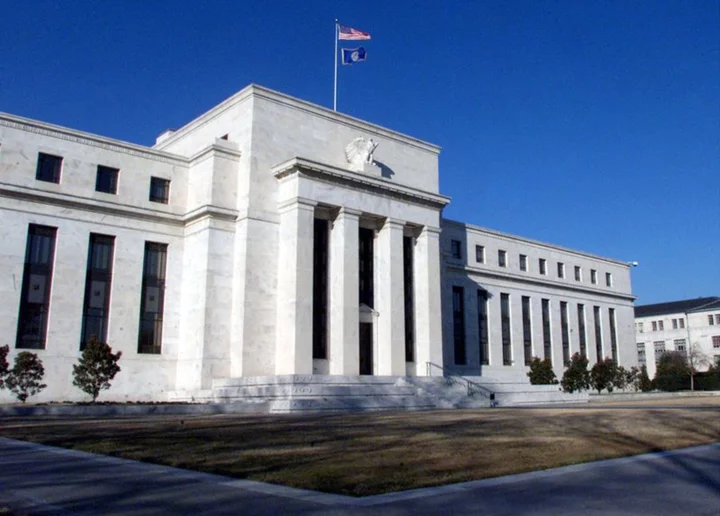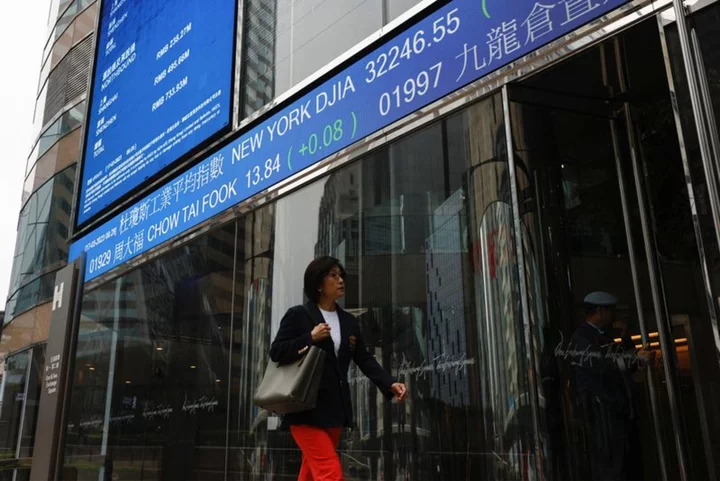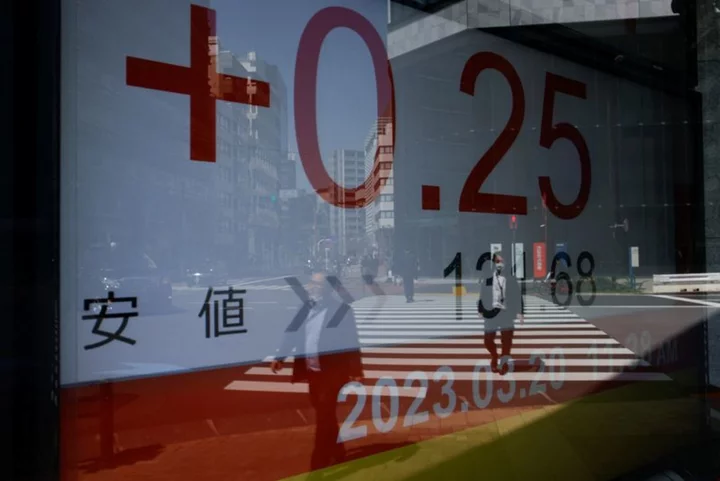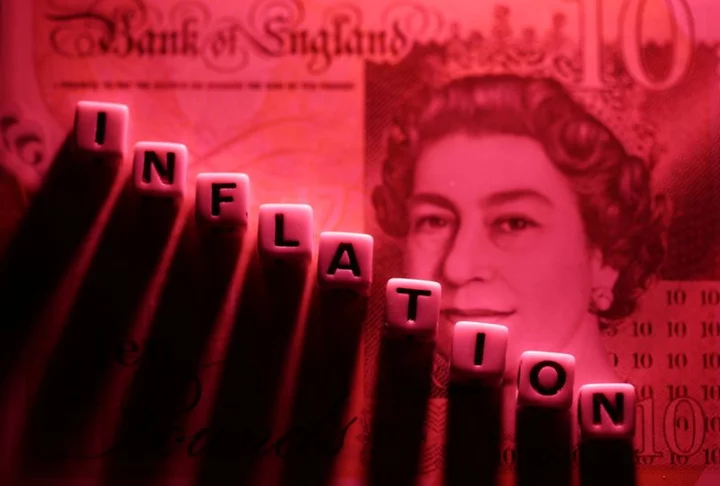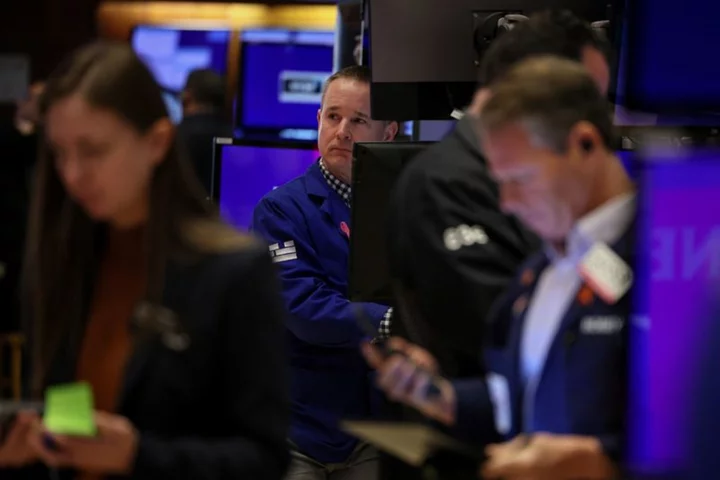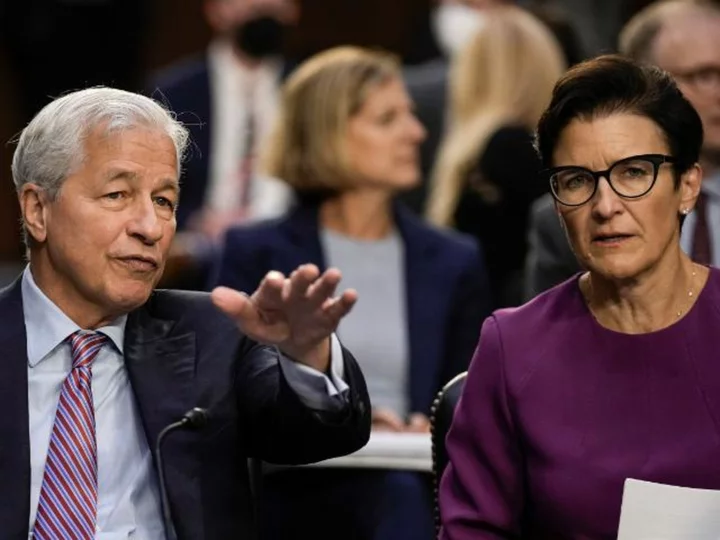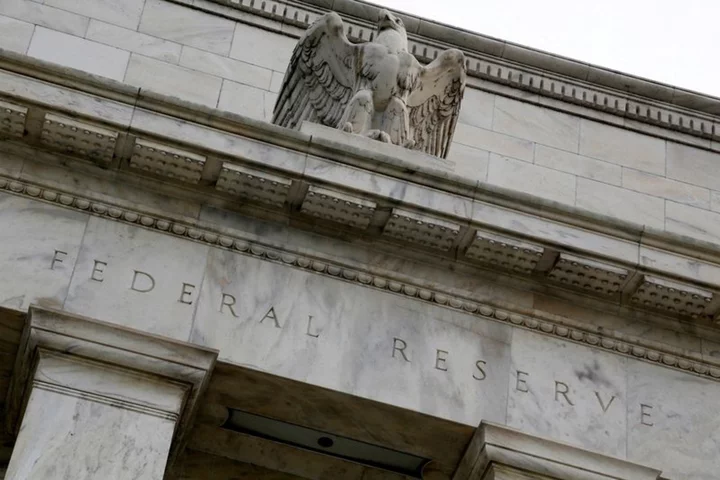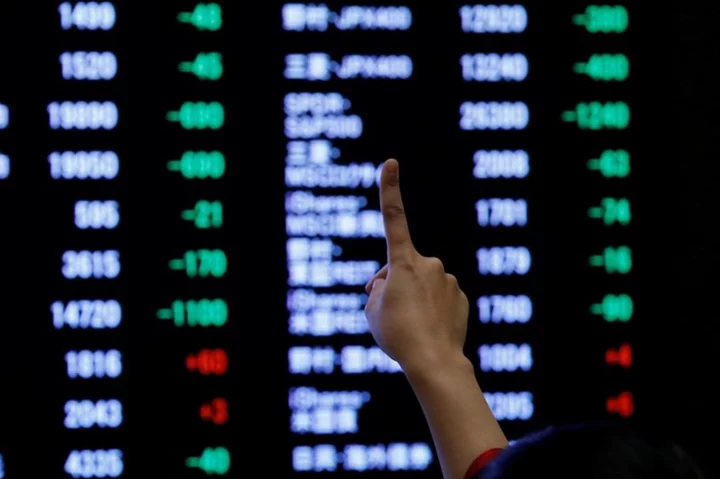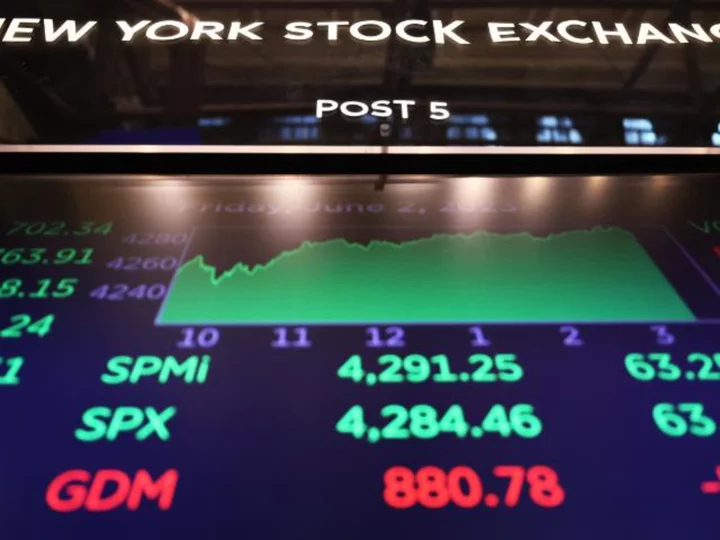By Jamie McGeever
ORLANDO, Florida (Reuters) -For the Fed and the U.S. economy, the hard bit starts now.
Depending on the length of monetary policy's 'long and variable' lag, a good chunk - perhaps even most - of the Federal Reserve's 500 basis points of interest rate increases since March 2022 have yet to be felt in the real economy.
As the U.S. central bank nears "peak rates," policymakers, consumers, businesses and financial markets find themselves in limbo - grateful for the "soft landing" that seems to be underway, but aware that the full impact of the tightening cycle is still to come.
The amorphous lag explains the cat-and-mouse game between the Fed and markets that has played out since the central bank began its tightening cycle last year.
Keen to be sure that inflation is dead and buried, Fed officials have tried to steer rates markets away from loosening financial conditions and disavow them of their long-held view that policy will be eased almost as soon as the terminal rate is reached.
For their part, markets have long expected the Fed to quickly pivot to a pretty aggressive series of rate cuts, largely to counter the accumulated lag effects of the tightening cycle.
With consumer price inflation dramatically down to 3% on an annual basis and the Fed's rate hiking campaign near its end, the 'long and variable' lags coined by economist Milton Friedman in 1961 will now come under closer scrutiny.
NEW RULES OF THUMB
An old rule of thumb is that it takes around 18 to 24 months for monetary policy moves to be to be felt in the real economy. Taken at its most literal level, the 500 basis points of tightening since March 2022 - 17 months ago - have still not registered at all.
This would suggest a significant hit to employment and growth is hurtling down the pike. It is not that simple of course, as the transmission of tighter policy in the modern world via forward guidance, swooning asset prices and tighter financial conditions is quicker.
There is a growing body of opinion that the lags have shortened considerably since Friedman shared his 'long and variable' theory.
Fed Governor Christopher Waller in January said policy moves now have an impact in 9 to 12 months, and a Kansas City Fed paper in December found that "the peak deceleration in inflation may occur about one year after policy tightening," although it stressed "high" uncertainty around that.
This would imply that as much as 200 to 275 basis points of rate hikes - the cumulative tightening since last July, 12 months ago, or September, nine months ago - have not begun to be felt yet.
Last September was when the Fed raised its federal funds target the 3.00%-3.25% range, above what its officials consider to be the 'neutral' rate around 2.5% which neither spurs nor slows the economy.
If policy has been restrictive all that time but has yet to be fully felt, while inflation has slumped to 3% from 9%, there's a case to be made that the Fed's job is pretty much done.
With inflation falling towards target and slowing at its most consistent pace in 100 years, and unemployment near a 50-year low, the central bank is close to meeting its dual mandate goals.
Data on Wednesday showed that consumer prices rose at an annual rate of 3.0% in June, down from 4.0% in May. Annual inflation has now slowed for 12 months in a row from a 41-year high of 9.1% last summer, the longest uninterrupted decline since the June 1920-June 1921 period.
"The disinflation process has been rapid and is now well advanced," economist Phil Suttle wrote on Wednesday.
Factoring in the policy lags still to come, the conversation now will likely turn to how much of the 150 basis points of rate cuts by the end of next year priced into rates markets will actually be delivered.
(The opinions expressed here are those of the author, a columnist for Reuters.)
(By Jamie McGeever; Editing by Paul Simao)

